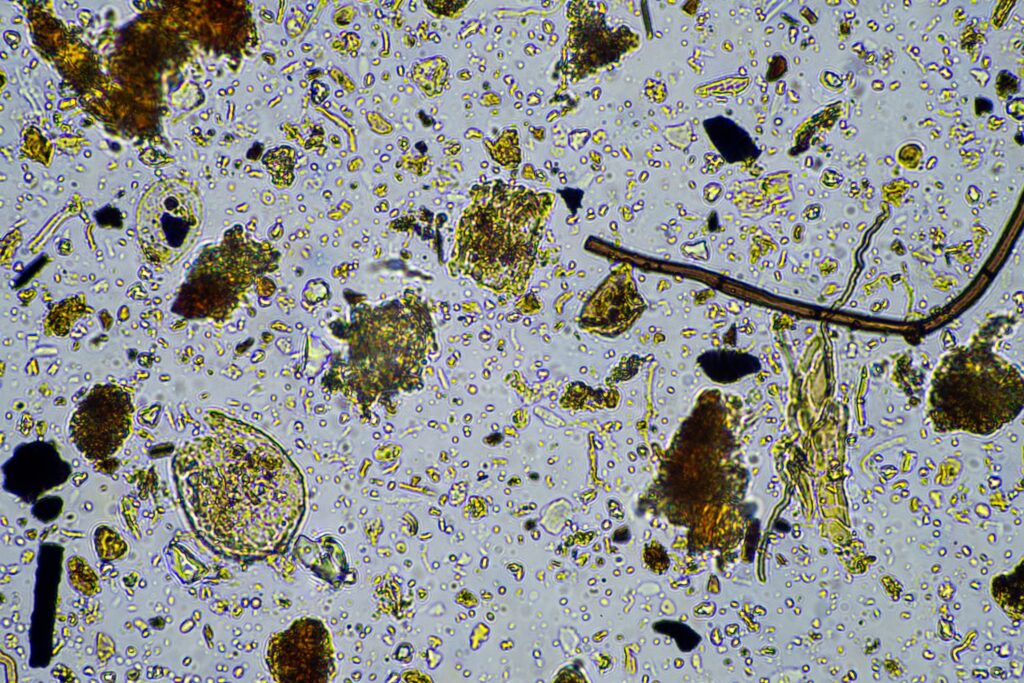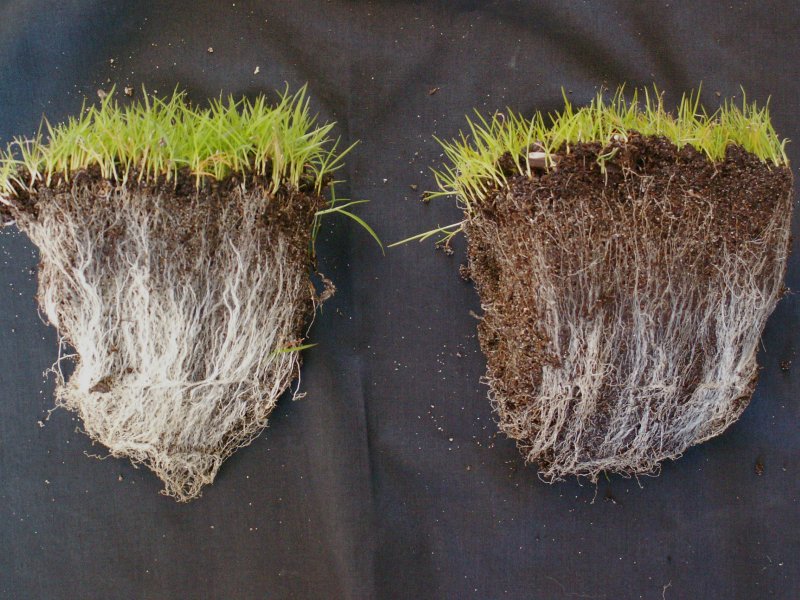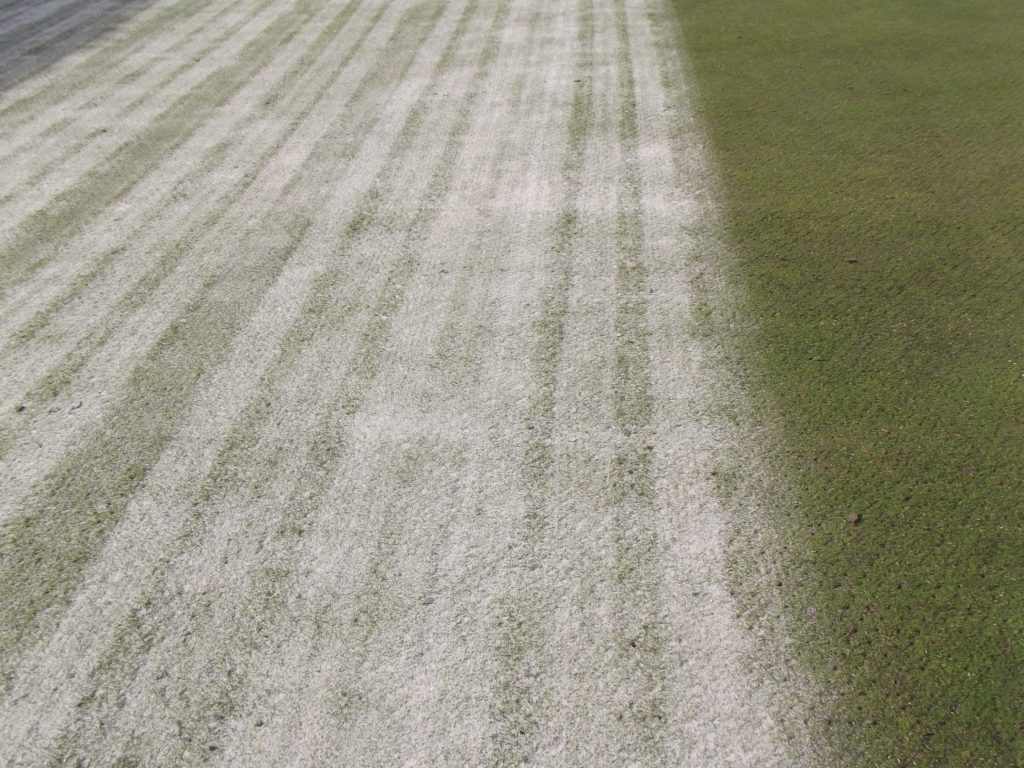Each individual grass plant releases sugars through its roots to attract beneficial microbes. In return, those microbes mine nutrients from the soil, cycle organic matter, suppress disease, and improve soil structure. This is so important to the health of plants that they give up around 50% of the sugar they produce during photosynthesis as root exudates.



